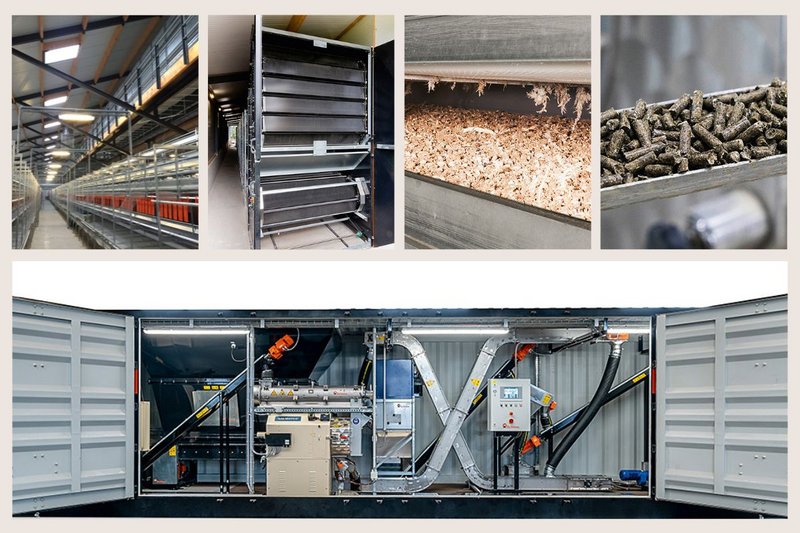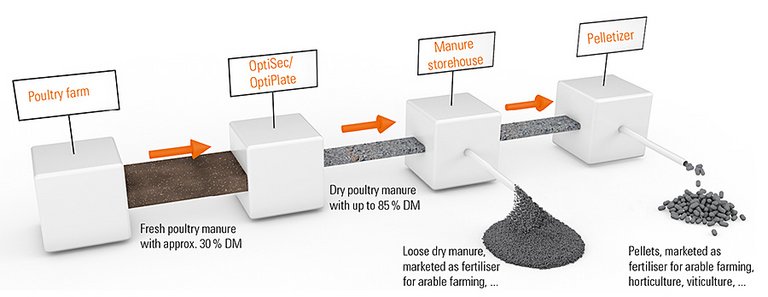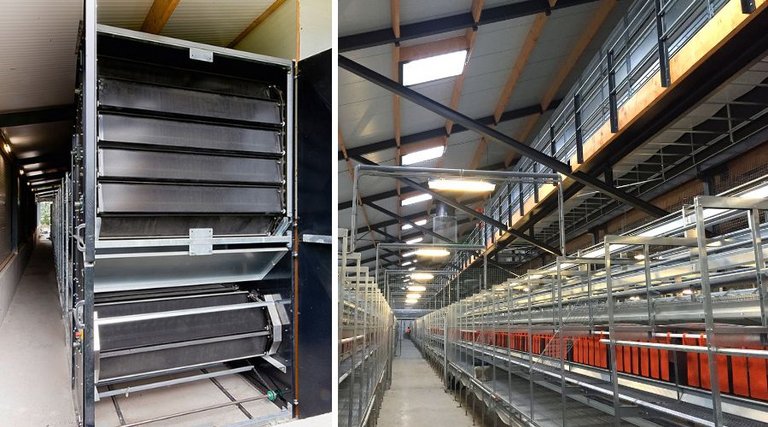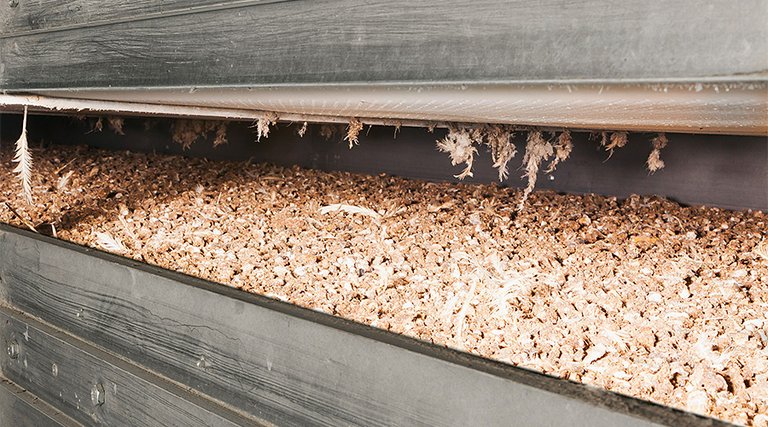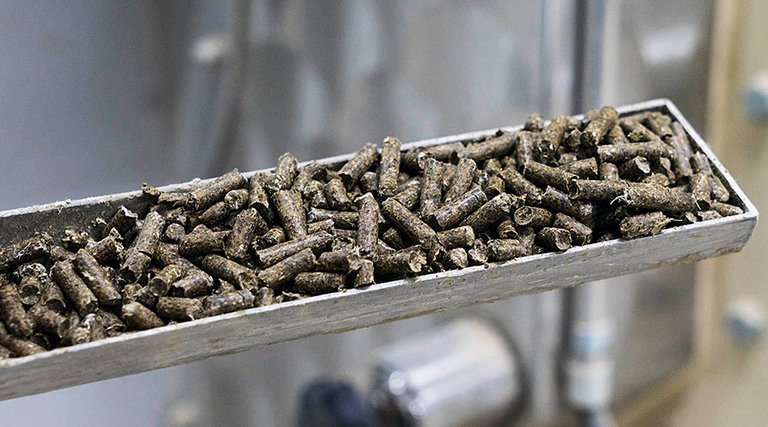For poultry production to be environmentally sound and save resources, manure produced by laying hens and heavier poultry must be treated in a manner that makes economic and ecological sense. Manure from poultry farms is a valuable organic fertiliser that should be used in a clever way, for example by creating a sustainable circular economy. Moreover, prices for mineral fertilisers are at a very high level. Current estimates say that this is not bound to change anytime soon.
Residue treatment or resource generation?
Poultry production: from poultry manure to pellets
In April 2022, NPK (nitrogen, phosphorus, potassium) fertiliser cost between EUR 730 and EUR 990 per tonne, according to www.agrarheute.com. From an economic point of view, farm manure is becoming more and more attractive for arable farms: its use reduces both the amount of expensive mineral fertilisers farmers need to buy and the carbon-intensive production of mineral NPK fertilisers.
As a consequence, poultry farmers can sell the manure produced by their birds at high prices if they offer their product in the correct form.
Fresh poultry manure cannot be spread on the fields as a plant fertiliser any time of the year. This makes sufficient storage capacities necessary, which are regulated by the Fertiliser Act in Germany. Farms with much livestock but few arable areas, especially when located in regions with intensive livestock farming, have to meet additional requirements.
One option of using the fresh manure produced by laying hens or broilers is feeding it into a biogas plant. The high nitrogen content of the manure can be an issue for the fermentation process, however, and spreading the liquid digestate can also become a problem. Especially in regions with a high livestock density, this digestate competes with slurry, and transporting both substances incurs high costs. Also problematic is the fact that not every poultry farm has a biogas plant in its neighbourhood.
This begs the question: Are there profitable alternatives for a sensible and efficient use of the valuable organic fertiliser that is poultry manure?
When laying hens are kept in aviaries, the manure belts collect fresh manure once or twice a week, i.e. new manure is produced constantly. This manure has a dry matter content (DMC) of 25 to 30 % and is therefore not storage-stable for very long. Moreover, high ammonia emissions can occur in the manure storehouse, with overheating being the worst-case scenario.
One solution would be drying the manure to reach a DMC of 80 to 85 %. Manure drying tunnels (either plate dryers or belt dryers) have been proving their worth in the field for several years now. The size of these tunnels, i.e. their length and the number of tiers, can be adjusted depending on the number of birds and the amount of manure produced.
Manure drying tunnels should ideally be integrated into the house layout from the very beginning. The waste heat from the house air is ideal for drying the manure with as little energy input as possible. This requires a matching ventilation concept. Several solutions that work very well are available. For example, the drying tunnel can be installed at the house’s long side or front end or directly in the house above a laying or rearing aviary.
Fans push the warm exhaust air into the pressure corridor at up to 4 m3 per hour and bird. In the pressure corridor, the warm air passes through all tiers of the manure drying tunnel from one side to the other along the entire system length. The perforated manure belts ensure that the air not only passes by the manure but through it. This makes for considerably better manure drying.
The result is a DMC of up to 85 %. The dry poultry manure created through this process is safe for storage in special manure storehouses and can be used for many applications. It is also easy to transport and can be brought to regions with a low livestock density at low cost.
| Nutriments (kg/t) | Dried poultry manure 70 % DM | Dry poultry manure 50 % DM | Fresh poultry manure 25 % DM |
|---|---|---|---|
| Nitrogen (total N) | 32.0 | 25.5 | 17.0 |
| Phosphate (P₂O₅) | 27.7 | 20.1 | 11.4 |
| Potassium (K₂O) | 22.8 | 17.5 | 10.0 |
| Calcium (CaO) | 63 | 50.6 | 30.0 |
| Magnesium (MgO) | 20.6 | 7.9 | 5.7 |
Just a few years ago, the question of whether this residue had now been used profitably would have been answered in the affirmative. Today, especially when looking towards the future, only half the job is done.
To improve marketing possibilities for dry manure significantly, the residues should be pelletised. Only then can the treatment process be called effective resource generation.
The reason is that pelletising reduces the volume of the loose material by around two thirds. The transportability and storability of pellets is therefore much better than that of loose and dry poultry manure.
This has a positive effect on marketing: the organic compound fertiliser pellets with low odour emissions allow for a much more specific fertilisation of the plants; the soil is provided with additional organic matter.
It should not come as a surprise that landscapers, horticulturists and customers with private gardens alike are very interested in these pellets. This is especially true for sanitised products.
While there are many large, mostly industrial plants that pelletise dry poultry manure (500,000 laying hens or more), smaller systems are also available. Such systems are often designed for up to 200,000 layers or for up to 240,000 broilers per year.
When the different process steps correspond well, poultry managers can even forego a manure storehouse. The ready-for-sale pellets can be stored in so-called BigBags for the short term.
The demand for this marketable compound fertiliser is currently increasing, so prices are also on the rise. EUR 110 or more per tonne of poultry manure pellets are not uncommon, especially when the pellets are sanitised and produced from dry poultry manure. This reduces the amortisation period for the investment.
| Number of layers | 50,000 | 100,000 | 120,000 | 150,000 | |
|---|---|---|---|---|---|
| Manure per bird and day | kg | 0.165 | 0.165 | 0.165 | 0.165 |
| Fresh manure per year, 30 % DM | t | 2,309 | 4,617 | 5,541 | 6,926 |
| Dry manure/pellets per year, 85 % DM | t | 815 | 1,630 | 1,956 | 2,444 |
| Revenues per tonne of pellets (EUR 110 per tonne) | € | 89,628 | 179,257 | 215,109 | 268,886 |
A calculation example: Investment costs for the dryer and the pelletiser amount to around EUR 430,000 (costs vary depending on the supplier, of course). Additionally incurred costs are the annual expenses (work, energy, maintenance, etc.) of approx. EUR 200,000. Calculating with revenues of EUR 110 per tonne of pelletised fertiliser and a straight-line depreciation over 7 years at an interest rate of 2 %, and with a bird number of 150,000 layers, profits amount to approx. EUR 69,000 per year, i.e. an ROI of 6.2 years.
| Number of layers | 150,000 | |
|---|---|---|
| Investment costs | € | 430,000 |
| Annual expenses | € | 200,000 |
| Total costs | € | 630,000 |
| Straight-line depreciation over 7 years | 66,300 | |
| Profits | €/a | 69,150 |
| Profitability (ROI) | a | 6,2 |
| Break-even | €/ton | 81,70 |
This example shows that the pelletiser should operate nearly at full capacity because pelletising only pays off from a specific system size. When bird numbers are too low, poultry managers should consider cooperating with other farmers, investing in the pelletiser together. Another option would be contacting agricultural service partners or a local nutrient exchange platform.


